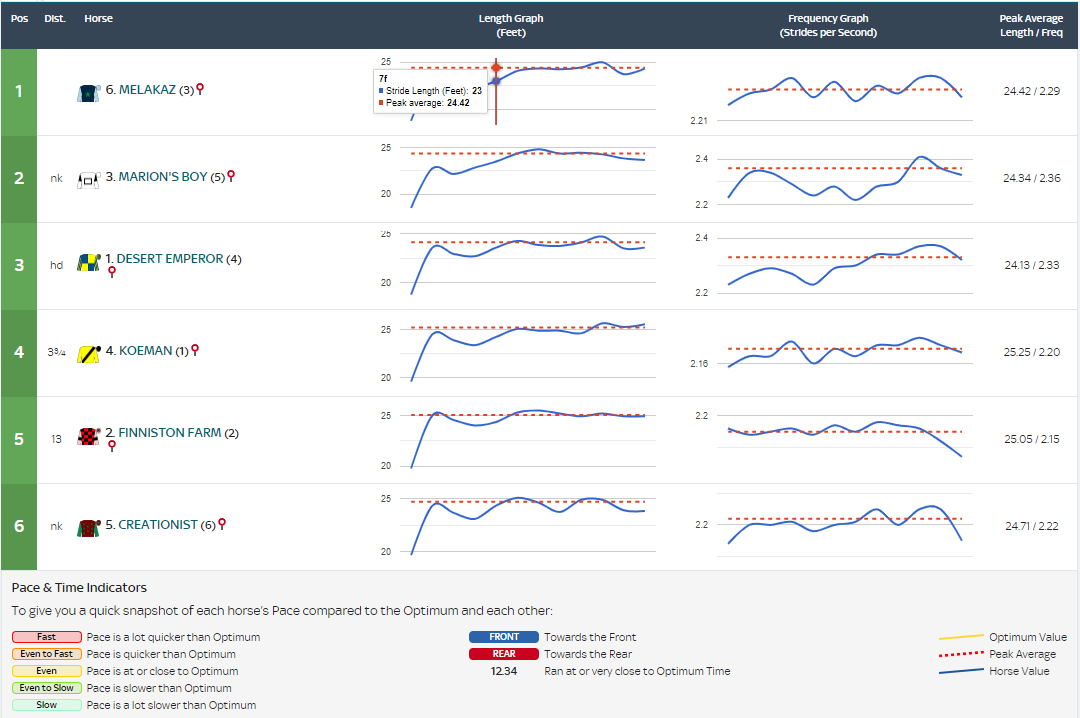By Riccardo Riccio, bloodstock advisor & former TPD operator




‘Just tuck in behind the leaders, get the horse settled in the early part of the race and come with a late run.’ Such instructions from trainers to jockeys are commonly mentioned in horse racing, and these tactics may contribute to a winning run. However, might there be a more scientific way to identify preferred races, in order to increase the probability of winning? I believe so and here is why.
Statistical analysis in racing continues to evolve and the data provided by TPD and distributed via the At The Races website in the UK and Equibase in the US has the power to enables trainers and owners to keep ahead of the game. Indeed, this data can be used to interpret and analyse parameters such as speed, stride length, stride frequency and many others. These stats, whether they are positive or negative, give us a clear indication of profiles, thus enabling us to analyse and understand the opposition’s past performance and behaviour.
To better comprehend this process, we have a look at a case study from Lingfield Park Racecourse, the 13.45pm Betway Apprentice Handicap on the 12th February 2022. The horse in question, Melakaz, was going for his third straight win and faced a more competitive field than he’d encountered previously, Marion’s Boy and Desert Emperor in particular who were two of his strongest opponents. When analysing the data, Desert Emperor’s and Marion Boy’s previous wins provided clues that they preferred a specific style of running. What do I mean by that? Let’s look at the data from these races:
Desert Emperor’s victory over 1m4f at Wolverhampton:




Another previous victory for Desert Emperor over 1m4f at Wolverhampton:




A previous victory over 1m2f at Lingfield for course specialist (4 wins at the track) Marion’s Boy:




When assessing the performance of these two horses, two notable factors became apparent. Firstly, both Marion’s Boy and Desert Emperor registered their fastest pace towards the end of the race, highlighted by the red colour on the pace bar. Secondly, both horses registered high stride frequencies for the distance in question. Melakaz therefore needed to ensure that his two main rivals ran ‘harder for longer’ in order for him to claim victory. The tactical instructions were provided to the very promising young jockey, Harry Davies and thanks to his skill and to the guidelines provided, Melakaz did indeed win the race. You can watch the race replay via the link below:
ATR Player | Replay | Saturday 12 Feb 2022 | 13:45 | Lingfield | At The Races
Looking at the data from the pace analysis below, it is evident that the fastest pace was registered between the halfway point and third quarter of the race, rather than the end of the race which we had seen in previous races ran over similar trip. When you also take into account both Marion’s Boy and Desert Emperor stride characteristics, their stride frequency over the final three furlongs had been impacted by Harry Davies’ tactics.




Robert Stephens, Melakaz’s trainer, gives us his insight as to why he values the data:
“We find the data invaluable and use it to help us when deciding what trip and course to run at. It will also determine our tactics in that particular race. We try to use jockeys that understand the data and will follow particular instructions that are based on the data. It is a big help when you can explain to a jockey what the best scenario would be for a particular horse based on the data of all the runners. It is also essential when analysing the performance post-race and helping us plan for the next race.”
Trainers can now leverage TPD’s data to analyse and understand their horse’s performance characteristics and that of their competitors, with the aim of finding a competitive edge and getting their horse a stride closer to victory.